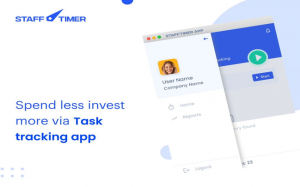Proven ways to track employee’s productivity in today’s world
Employee Productivity is the buzz word of current times. Many people are trying to be more productive in their personal lives. Many more are trying to enhance their work productivity.
In some peculiar settings like a remote work environment, it becomes more important to track employee productivity.
Defining Employee Productivity
Employee productivity is the measure of the efficiency of an employee or a group of employees. It is often assessed by the quality and quantity of work produced.
Employee Productivity is a relative statistic. For an individual employee, it is assessed by comparing the individual’s productivity to that of a group of people. Employees with high productivity levels are often more productive than the average team. Similarly, people with low productivity levels are often not able to produce the average quality or quantity of work as compared to the rest of the workforce.
Why is productivity important?
Productivity is one of the more important agendas of the management, in the Corporate World of today. The reasons are manifold.
Cutthroat competition is inevitable in today’s corporate sector and having a slow and lazy team is simply not an option.
Much of the profitability of the organizations depend upon the workforce. So it is quite important to have a dependable and diligent team of employees.
The trends, expectations, and demands of the market are constantly changing. To keep up with the evolution and changing the landscape of the market, it is important that the employees are intellectually productive.
Tracking Employee’s Productivity
Having established the importance of employee productivity, let’s discuss some of the ways by which it is measured.
1. Track their time
Often it is a duty of the Project Managers to assign individuals with a list of tasks. Tracking productivity by means of tracking the time it takes to get a job done is one of the most common ways of measuring the productivity of an employee.
For this purpose, many organizations deploy Time Tracking Software. These tools let the employees measure the amount of time they spend on each individual task. They also help employers get a transparent idea about employee productivity.
2. Assess the value
There are many situations where just the measure of time is not a good indicator of productivity. For example, the productivity of a painter is measured by the time it takes to finish a piece. So, either the productivity will come out to be dismal or the efforts to enhance the productivity will result in poor quality work. Therefore, time is not always the best indicator of the productivity of an employee.
One of the widely used metrics of employee productivity is assessing the value that an employee brings to the table. The presence of a certain individual can bring value to your team in many ways. For example, an HR manager might be a source of motivation and positivity for the rest of the team.
An executive might be a good mentor for training newbies. A marketing executive with a stellar personality might boost your sales. An individual with great skills can affect your team in more than one ways and assessing the value they bring to the organization is a useful way to measure their productivity.
3. Cost-profit analysis
Making profits in the universal aim of all the businesses around the world. An employee is productive and profitable if he helps the organization generate more profits then the cost of retaining him in the company.
The cost of keeping an employee on the payroll consists of compensation, benefits and other expenses of the housing. If the revenue that he assists in generating are greater than the costs, then the employee is definitely productive and a valuable asset for the company.
4. Measuring Employee’s Productivity
Having established the importance of employee productivity, let’s discuss some of the ways by which it is measured.

5. Indications about the strengths and weaknesses
When you track employee productivity, you get useful insights about the strengths and weaknesses of the workforce.
The managers get to know about the employees that outshine the rest of the team. They get an idea about the team members who are unable to deliver the desired results. The management gets to identify productivity blockades and hurdles.
The data also becomes useful to identify low performing individuals. By correct identification of the problems, the management can take steps towards improving the situation.
6. Guides you about the budget
Managers who know the production capacity of their teams are in a good position to make good financial choices.
Productivity tracking is so much more than just the number of hours worked. It delivers insights into all kinds of available resources. These insights empower the management to make sound decisions related to budgets and financing.
7. A basis for performance appraisal
Everyone needs appreciation for the work they do similarly, employees do too.
Productivity tracking provides ample data for the managers to officially recognize the work and efforts of the team. Therefore, time and productivity tracking, as boring as it may sound, helps employees in making their efforts known to the management.
Praise and rewards can help increase the motivation level of the team. And this, in turn, can help in boosting the productivity of the whole team.
8. Makes employees more productive
It is a scientifically proven fact that individuals tend to be more productive when they know that they are being watched. Just like that, employees tend to be more productive when they realize their team leads are monitoring their progress.
Moreover, when one employee gets praised for the work that he does. He sets a positive example for the rest of the team which in return establishes a positive work culture.
Conclusion
Track employee productivity to find out hidden truths about your team. This will not only improve the organizational culture in many ways but also the profitability of your organization!
Like what you read? We have more for you:Top three-time tracking applications for remote employees






